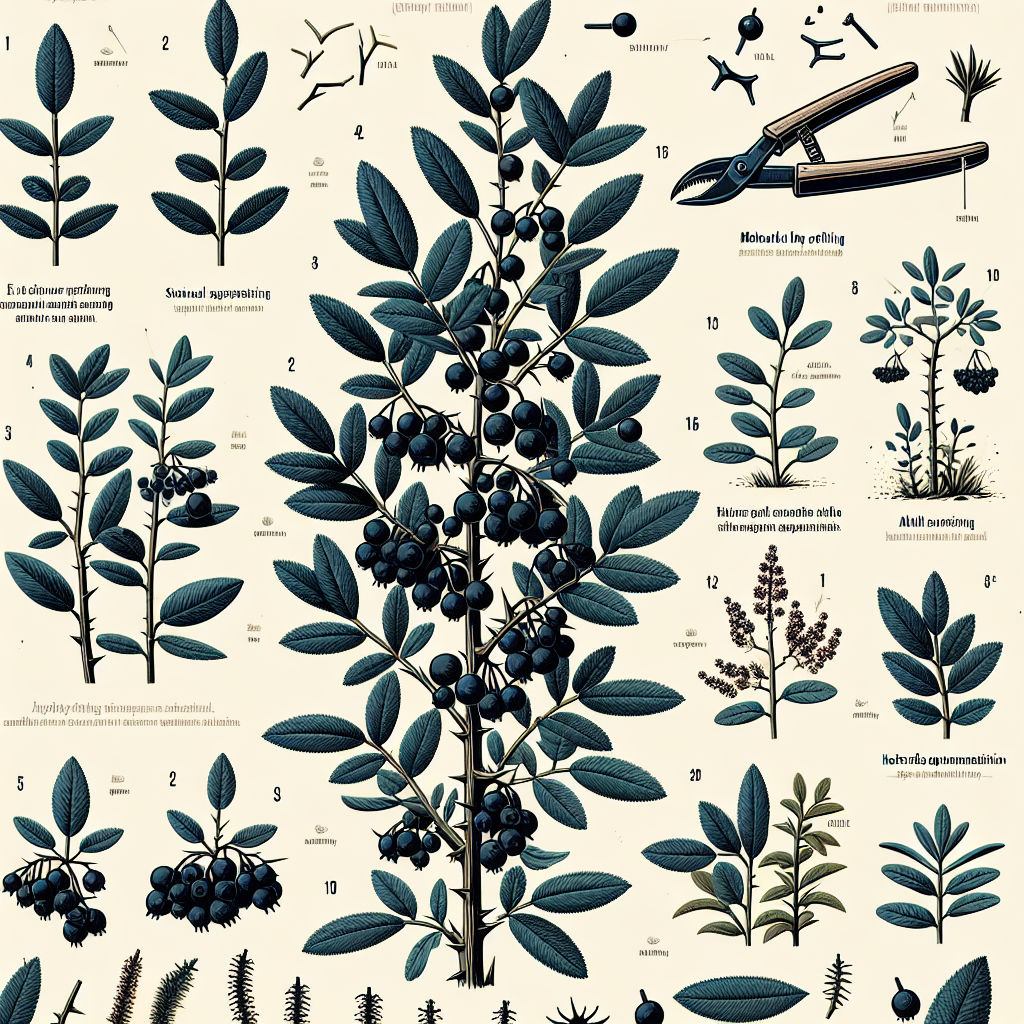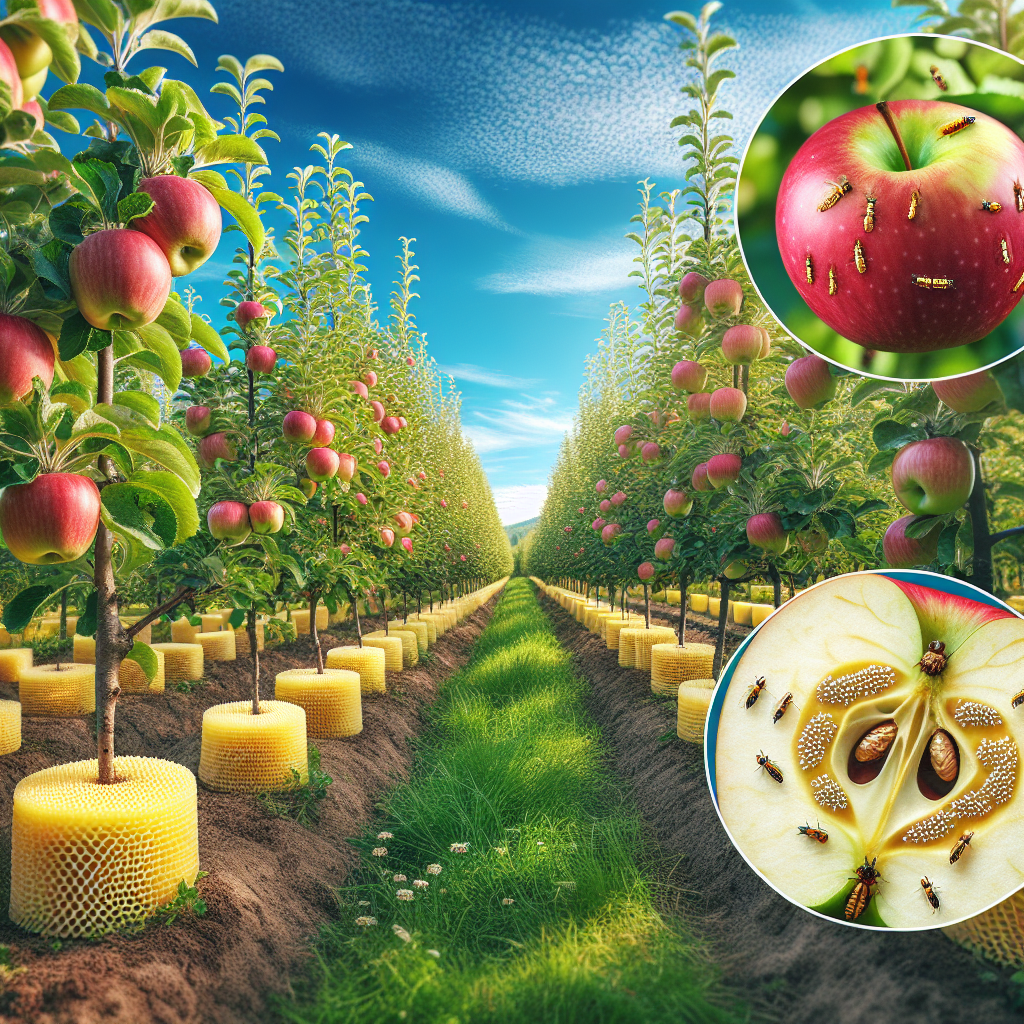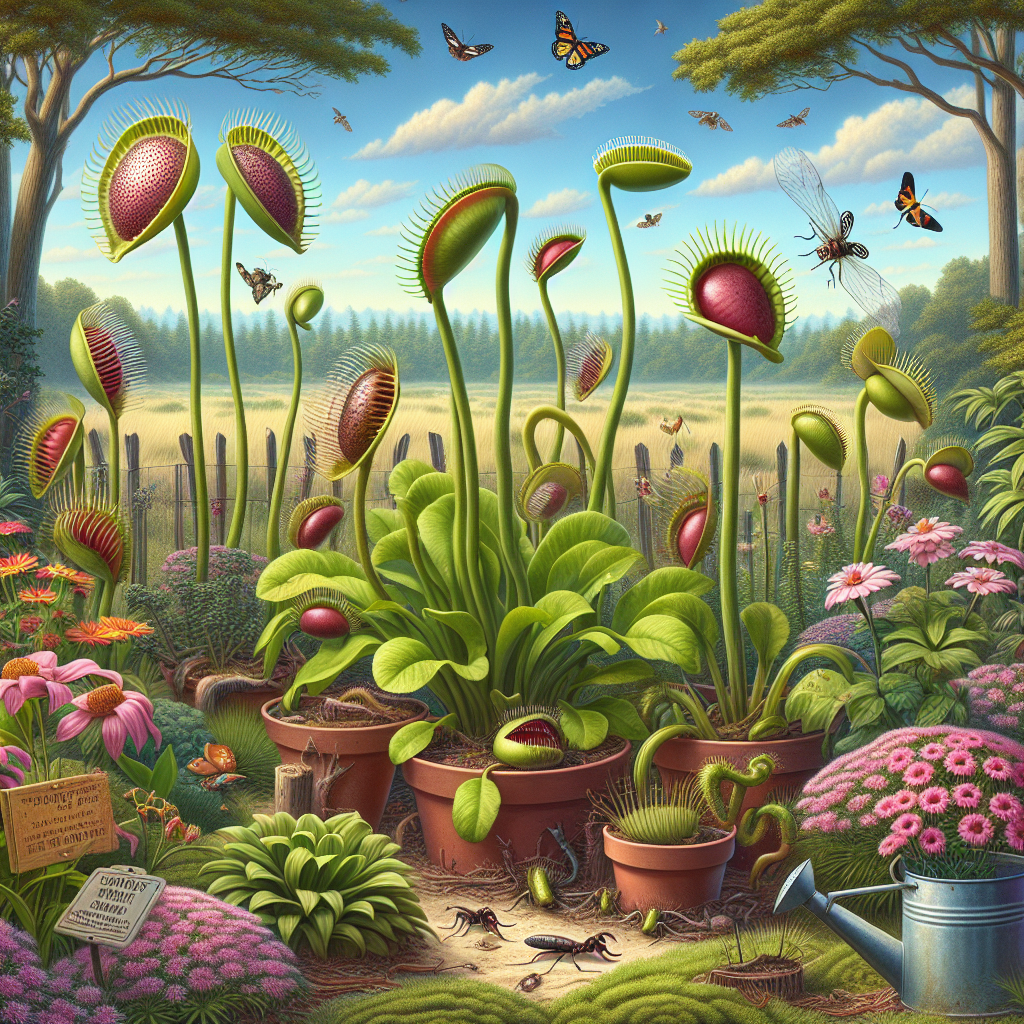Buckthorn Bushes: How to Identify and Manage This Invasive Plant
Updated March 25, 2025 at 8:19 pm

Introduction to Buckthorn Bushes
Pet Friendly: Generally, buckthorn berries can be harmful to pets if ingested.
Identification Tips: Buckthorn bushes are characterized by their small, dark berries and ovate leaves with toothed margins.
Management Strategies: Effective management includes both mechanical removal and herbicide application.
Environmental Impact: Buckthorn can disrupt local ecosystems by outcompeting native vegetation.
Removal Difficulty: It can be challenging due to their extensive root systems and resilience.
Identifying Buckthorn in Your Environment
Buckthorn bushes can often be mistaken for other native shrubs; however, specific characteristics enable accurate identification. Recognize buckthorn by its small, dark berries and distinct leaf margins that are finely toothed. During spring, look out for the small yellow-green flowers.
Additionally, buckthorn has a characteristic bark that is dark and finely textured. These detailed observations are crucial as early identification can prevent the spread of this invasive species in your area.
Understanding Buckthorn’s Impact on Ecosystems
Buckthorns impact ecosystems detrimentally by forming dense thickets that overshadow and stifle the growth of native plants. This suppression of biodiversity can further influence local wildlife, which depends on indigenous vegetation for their survival.
The disruption goes even further as buckthorns alter the soil chemistry, making it difficult for other plants to thrive. This domino effect on the ecosystem showcases the urgency in managing the spread of buckthorn bushes effectively.
How to Safely Remove Buckthorn from Your Property
When removing buckthorn, it’s essential to use safe and effective methods. Physical removal of small shrubs by hand-pulling is a start; however, for larger bushes, tools such as a buckthorn puller might be necessary. One such tool is the ‘Extractigator,’ a popular hand tool designed to uproot small trees and invasives like buckthorn with relative ease.
Based on countless user reviews, the ‘Extractigator’ is praised for its durability and effectiveness, making it a worthwhile investment for those battling against invasive species like buckthorn. This sturdy device allows for complete removal, roots and all, to help ensure the bush does not regrow.
Find This and More on Amazon
Chemical Control and Herbicide Use
If physical removal is not viable, especially for extensive buckthorn problems, chemical control may be necessary. Glyphosate-based herbicides are one approach, and the product ‘RoundUp’ is a commonly used option for effective control when applied correctly.
When browsing through reviews, gardeners often note the effectiveness of ‘RoundUp’ when used as directed. Despite its controversial nature, when safety precautions are followed, this herbicide can play a critical role in invasive species management.
Find This and More on Amazon
Preventative Measures and Landscape Management
Prevention is key to buckthorn management. Ensure regular monitoring of your property for early signs of buckthorn, especially in disturbed areas where they commonly take hold. Establish and maintain a diverse array of native plants to deter the spread of this invasive shrub.
Strategically planting native species can create a barrier to buckthorn encroachment, offering an environmentally friendly preventative measure that supports local biodiversity.
Community Efforts and Reporting
Managing buckthorn is not just an individual effort. Community collaboration and reporting sightings to local conservation groups can help control the spread at a regional level. If you spot buckthorn in public spaces or natural reserves, reporting these invasives can contribute to broader control initiatives.
Engagement in local eradication programs not only aids in managing this invasive plant but also fosters a sense of community and collective responsibility towards protecting our environment.
Further Reading and Resources
To gain more insights about buckthorn identification and management, numerous online resources and local extension services are available. These sources provide detailed guides and tailored advice for dealing with invasive species in specific regions or climates.
Whether you are a novice gardener or an experienced landscaper, educating yourself through these resources will equip you with the knowledge to tackle buckthorn effectively.
Environmental Safe Practices
In all buckthorn management practices, it’s crucial to prioritize the safety of the surrounding environment. This means using herbicides responsibly and only when necessary, and ensuring that physical removal methods do not cause undue harm to the habitat.
By following safe practices, not only can you manage buckthorn more effectively but also protect the very ecosystems you are aiming to preserve.
Comprehensive Guide to Removing Buckthorn
Before embarking on buckthorn removal, it’s important to have a clear understanding of the various approaches. A comprehensive strategy involves an initial assessment of the infested area, followed by selecting the appropriate removal methods.
Small infestations might be managed via manual removal, while larger ones may require more advanced techniques such as the use of specialized tools like the ‘Extractigator’ or the application of herbicides like ‘RoundUp’.
Mechanical Removal Techniques for Buckthorn
Mechanical removal, when done correctly, can effectively manage buckthorn without the use of chemicals. Hand-pulling young plants and cutting down adult bushes followed by stump treatment to prevent regrowth are effective strategies.
Another mechanical method is the use of a tree stump grinder for large projects, reducing the buckthorn stump to wood chips and disrupting the root system. Pros: Immediate removal and no chemicals. Cons: Labor-intensive and may not be feasible for large areas or for those with physical limitations.
The Role of Professional Landscaping Services
For those who may not have the time, tools, or physical capability to manage buckthorn removal, professional landscaping and ecological restoration services offer an alternative. Professionals have access to high-powered tools and the expertise necessary to properly eradicate buckthorn.
One such service widely recommended is ‘Davey Tree Expert Company’. From their customer reviews, it’s clear that they offer knowledgeable and efficient buckthorn removal services. With experienced arborists, they can tackle even the most persistent infestations.
Find This and More on Amazon
Buckthorn Reinfestation Control
After successfully removing buckthorn, preventing reinfestation is crucial. Regular maintenance practices such as monitoring the property, pulling new seedlings, and replenishing with native species will help keep the buckthorn at bay.
Utilizing mulches can also suppress the growth of buckthorn seedlings by creating a barrier on the soil surface, reducing light penetration and seed germination. Pros: Environmentally friendly and supports other plant growth. Cons: Requires consistent application and maintenance.
Best Practices for Disposal of Removed Buckthorn
Appropriate disposal of the removed buckthorn is just as important as the removal itself. Never compost buckthorn plant material as the seeds might spread. Instead, most communities recommend burning, deep burial, or proper disposal at a designated waste facility.
Check with local regulations or waste management services for the most environmentally friendly and legally compliant methods to dispose of invasive plant material in your area.
The Debate Surrounding Herbicide Use
The use of herbicides like ‘RoundUp’ often stirs debate due to environmental and health concerns. It’s widely agreed that, if used, they should be applied in a targeted manner, following label instructions, and with all necessary personal protective equipment.
Despite these concerns, many find that the careful use of herbicides is necessary for large-scale buckthorn management, given the invasive nature and vigorous growth of the plant. If choosing this route, ensure all safety recommendations are followed meticulously.
Sustainable Landscaping Alternatives
For those seeking to avoid chemicals altogether, sustainable landscaping practices offer alternatives. This involves the strategic use of native plants that compete with buckthorn for resources, creating a less hospitable environment for the invasive species.
Native grasses and wildflowers, for instance, can outcompete buckthorn by establishing robust root systems, providing habitat for local wildlife, and bringing balance back to the area. Pros: Enhances local biodiversity. Cons: May take several seasons to establish and see results.
Tips for Long-Term Maintenance and Monitoring
Long-term success in managing buckthorn requires ongoing vigilance and maintenance. This involves regularly walking your property to inspect for new growth and keeping the native plant populations healthy and resilient to prevent buckthorn resurgence.
Setting up a maintenance schedule, perhaps seasonally or biannually, can help ensure that all new instances of buckthorn are dealt with promptly before they have a chance to spread.
Awareness and Education: Key to Combating Buckthorn
Increasing public awareness and education about invasive species like buckthorn is paramount. Educating local communities through workshops, informational pamphlets, and school programs can create a knowledgeable base of residents equipped to recognize and manage buckthorn.
Citizen science programs often offer platforms for individuals to learn and contribute to the tracking and management of invasive species in their areas, promoting a collective approach to ecological preservation.
Collaborating with Neighbors and Local Authorities
Successful long-term management of buckthorn is not solely an individual endeavor; collaboration with neighbors and local authorities can substantially magnify impact. Engaging with your community can help pool resources, share knowledge, and coordinate removal efforts efficiently.
Working together also presents the opportunity to seek grants or assistance from local environmental agencies, which can provide additional insight and support for managing this invasive species across larger landscapes.
Incorporating Buckthorn Control in New Landscaping Projects
When planning new landscaping projects, consider incorporating buckthorn control strategies from the onset. By selecting and planting native species that are known to outcompete buckthorn, you can provide a natural line of defense against this invasive plant.
Consulting with a landscape architect or ecological designer who has experience with invasive species can help you to design a garden that is both beautiful and resilient against unwanted invasives like buckthorn.
Building a Community of Practice for Buckthorn Management
Creating a community of practice around buckthorn management allows individuals to exchange experiences, share successful strategies, and problem-solve collectively. This could involve setting up online forums, community meetings, or collaborative workdays for physical removal.
Participation in these communal activities not only bolsters efforts against buckthorn but also builds relationships and strengthens ties within the community that are rooted in shared environmental stewardship.
Assessing the Effectiveness of Buckthorn Removal Strategies
It’s crucial to assess the effectiveness of the buckthorn removal strategies implemented on your property. Maintaining records of what was done, when, and the resulting changes can help understand what works best in your specific situation and adjust tactics accordingly.
Tracking progress is also motivating and can serve as a valuable reference for neighbors and local groups working on similar buckthorn management efforts, creating a repository of shared knowledge.
Conclusion and Next Steps for a Buckthorn-Free Landscape
In conclusion, managing buckthorn requires a multifaceted approach that includes early identification, strategic removal, and diligent prevention practices. By staying informed, utilizing the right tools and methods, and fostering community engagement, a buckthorn-free landscape is an achievable goal.
Remember, the journey towards controlling this invasive plant is continuous. Stay vigilant, engage with your community, and always opt for environmentally responsible actions to preserve the native ecosystem for generations to come.
Shop more on Amazon

